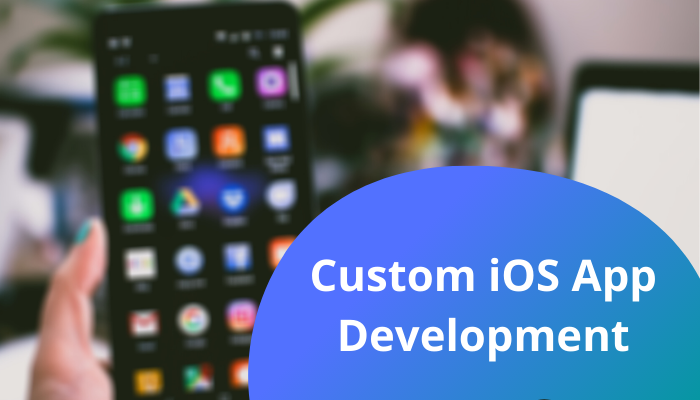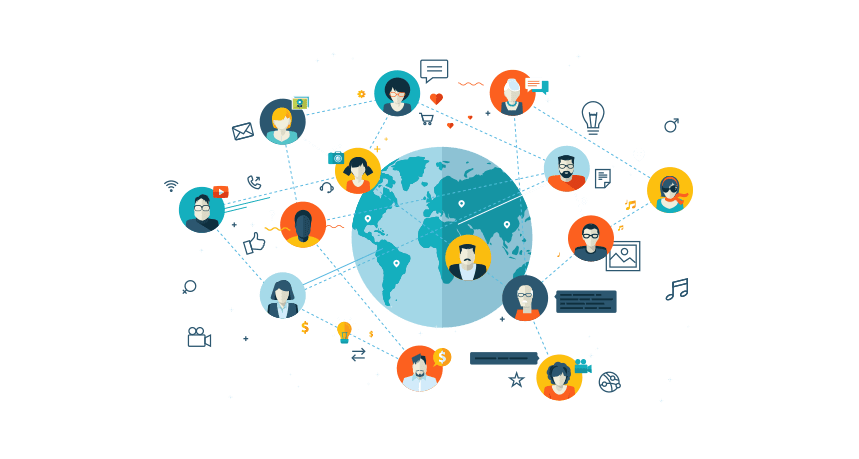
The technology has reached remarkable strides, and with this revolution, smartphones have taken over traditional phones. The mode of communication has also entirely shifted to digital platforms with the rise of the internet. All these rapid changes have impacted people's daily life and schedule. From kids to adults, we see everyone relying on mobile devices and applications to make their lives easier and comfortable. We love exploring new applications that can provide us with simple solutions for fundamental things.
Hence, the companies and marketers are also coming around with attractive websites and applications to take a step closer to their audience. The booming of the application industry is the primary reason why businesses need to stay updated with the digital guidelines for effective app development. Currently, In the web application development industry, two major players are dominating the field: Android and iOS app development.
Both the applications carry their own set of modifications and functionality. If Android has a more extensive user base, iOS applications result in higher revenue generation with in-app purchases and other services. Moreover, the user base of iOS is growing exponentially, and recently, the numbers have surpassed the 700 million mark.
Looking at these figures, it's not surprising why enterprises are shifting towards the iOS app development platform to reach maximum targets. Therefore, if you too have decided to enlighten your online presence by developing your business application on the iOS platform, you have made the right choice. However, Apple's app store's acceptance of apps is complicated, and that's why it is necessary to pay attention to specific protocols while developing an app on the iOS platform.
To make it a little easier for you, we have listed certain iOS application development phases in this article. These act as effective guidelines that iOS app development companies follow to smoothen out the process.
So let's get started with the Lifecycle of iOS app development.
- Research
There are currently approximately 2.5 million applications on the Apple app store, and the numbers keep increasing every day. These figures indicate that there might be many similar applications available with close features on the platform. This may come across as a challenge for fellow application developers. However, you can use these numbers as leverage to conduct extensive market research. The varied availability can help you understand the current trends and in terms of features and requirements.
You can also go through the customer feedback on the store and reveal the users' insights and demands.
- Ideation:
Once you are done with the research, your ideation process automatically simplifies. You now know certain user demands that can be fulfilled by your application. The application idea has the potential of creating the entire roadmap of how the app can be utilized.
While you are into the ideation phase, be open to all kinds of suggestions and iterations. Since it is the first step towards app development, it will be time-consuming and will require a lot of amendments. Once you have successfully cultivated a robust idea for your application, finalize it, and proceed towards the next step.
- Wireframe Creation :
If we put it into simple terms, a wireframe is a blueprint of your application. It doesn't contain design or templates but is more like the app's most simplified visual representation. The wireframe concept can help the development team understand several possible challenges and identify cost areas.
- UI/UX designs
The design of your application is the most attractive part that can lure your user. The UI designs determine the ease of navigation and the user's overall experience throughout the app. Hence, it is crucial to stick to the guidelines provided by Apple. For instance, Apple recommends a suitable touch size of the 44-pixel square.
The design phase allows the team to create display features such as icons, logos, graphics, and animations. Therefore, you have to make sure that you come up with a unique and relatively easy design for a fluid experience.
- Software architecture Initiation :
While the design phase focuses on app features and visibility, the software architect planning simultaneously emphasizes the application's scalability and stability. Both the phases run parallel due to their dependency on each other. Besides this, when you plan a comprehensive architecture for your app, keep in mind the fluctuating market dynamics that can impact the build afterward.
- iOS App development :
Now that you have all the maps, designs, and resources, you have to enter the actual development phase that requires both frontend and backend development. From caching to synchronizing the database to the development of wireframes and designs, everything is taken care of by the front end.
On the other hand, the backend team manages the functionality and customization of the app. iOS app development is unsuccessful without the coordination of both the teams.
- Testing and Publishing :
When your application is entirely developed, it is time to publish it on the App store adhering to the stringent regulations. The iOS app review period usually lasts up to 10-15 days. To publish the app successfully, it should go through the usability test, performance test, and case preparation. Once it's published, do not forget to promote and make it visible to the users to catch their attention.
In case of rejection, the App Store lists the key reasons to reject the app after submission.
- Regular Updates :
The process doesn't stop at publishing the app on the App store. You should be aware of the user feedback as well. The development team should provide regular updates to the users to encounter bugs and other issues. Moreover, ensure that your app supports all the latest iOS guidelines and developments.
Conclusion
The current market for an application requires rapid development. During any phase, if you find adapting to the iOS environment challenging, you can ask for prominent iOS app development services that can help you overcome these difficulties. We understand developing an iOS application demands time and effort, but an optimized and well-planned process can make you attain the desired results.
Also read about:
Very Useful Instagram Tips for Celebrity
How to Become Google Associate Android Developers
create the best custom website and get traffic










